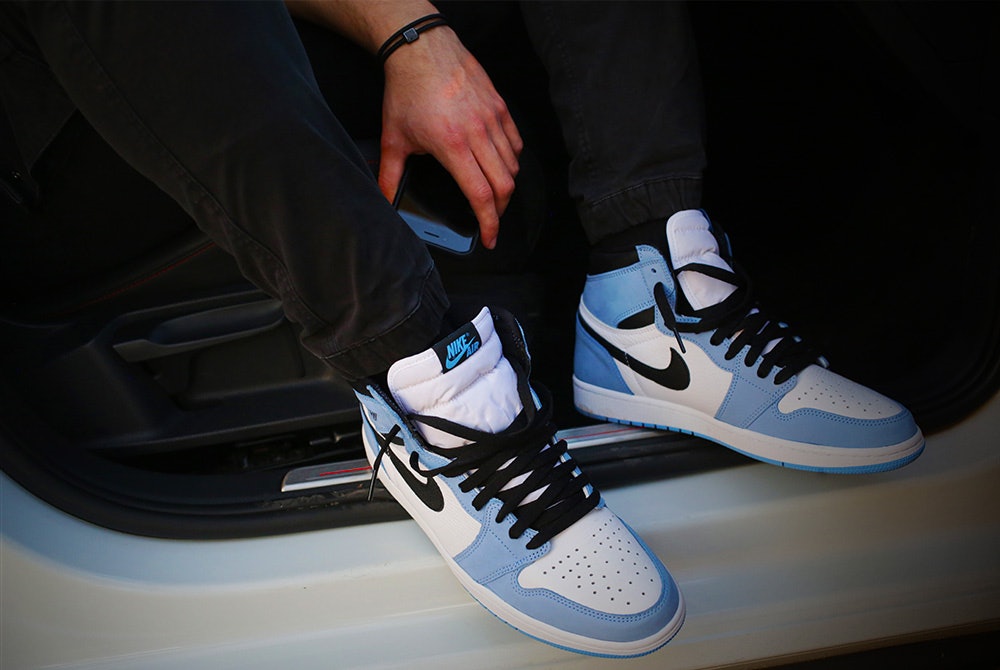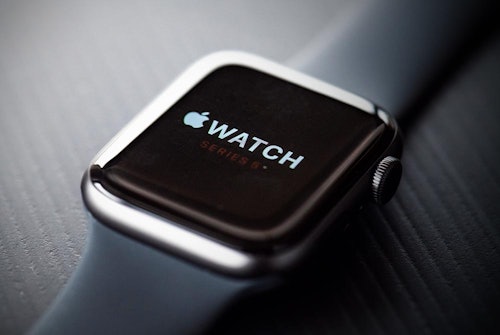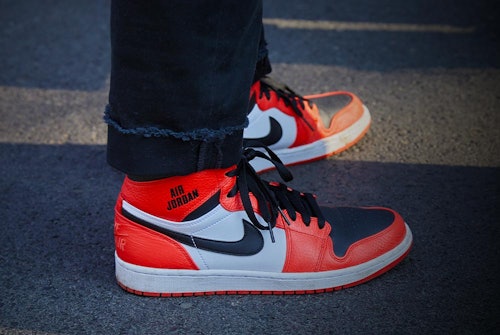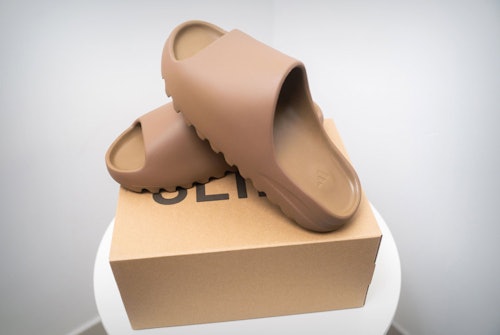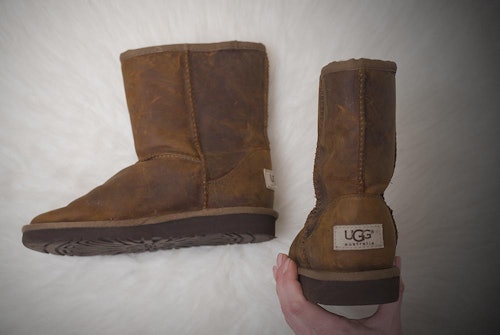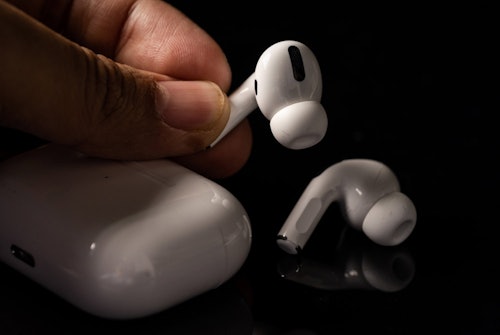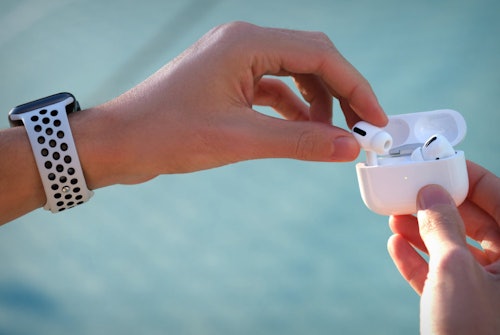Fake & Counterfeit Products In Depth
United States Counterfeit Goods Statistics
Source: Library of U.S. Congress
- What Are Counterfeit and Fake Products?
- Counterfeit Products Are Sold Everywhere
- Red Flags of Counterfeit and Fake Products
- Which Brands Are Commonly Counterfeited?
- How to Avoid Buying Fake Products
- What to Do After Purchasing Fake Products
When you buy something online, it is essential to ensure that you get what you paid for. This can be hard to do since you don't yet have the product in your hands and only have the listing to determine if you are buying a legitimate product, which may show you fake photos. Many online shoppers have paid for counterfeit items because they don't know how to tell the difference between genuine items and fake products, but there are ways you can protect yourself.
What Are Counterfeit and Fake Products?
By definition, counterfeiting is "the process of making an imitation of something with the intent to deceive." This definition can cover a lot of things, from currency to art. Consumer products are one of the most significant categories of counterfeits because scammers can easily set up a fake online store or list their fake products in one of the online marketplaces (e.g., Craigslist, Facebook Marketplace). This allows them to sell to thousands of customers all over the world.
Scammers will set up a complete supply chain for their fake goods, including:
- Manufacturing
- Import
- Export
- Distribution
They manufacture products that look similar to popular consumer products and attach a logo to make them look real. Often, fakes are manufactured with lower quality or even toxic materials, and some, like electronic devices, can be dangerous to use.
According to data collected in 2021, 1 in 4 brand name products could be counterfeit, and 9 out of every 10 fake products are sold online. Authorities also intercepted 8% more fake products in 2021 than the average confiscated in the three years before.
Counterfeit Products Are Sold Everywhere
Even though you may think you're being careful to avoid buying counterfeit items, it's almost impossible to steer clear of them. Sergi Garcia, Chief Marketing Officer at Red Points, says that counterfeiters are present in thousands of e-commerce platforms because that's where consumers are.
"It's a common strategy for counterfeiters to be present in multiple channels such as digital marketplaces, social networks, and stand-alone websites, at the same time," Garcia says.
"An example of what they do is buy fake ads on popular social media platforms in order to promote their infringing listings that are buried in the marketplace."
With anyone able to buy ad space on social media platforms for a relatively low cost, it's no wonder that this has become a favorite method amongst scammers.
"It's a growing technique to trick users into buying from bad actors," Garcia says. "These fake ads can also redirect users to a standalone website impersonating the original brand."
Using this technique, scammers can make you believe you're buying the real deal from a legitimate site, when in fact, you're buying a fake. Garcia adds, "During the whole process, shoppers think they are dealing with a legit brand when in reality it is a scammer trying to either sell them counterfeits or steal their financial data."
Red Flags of Counterfeit and Fake Products
Accidentally buying counterfeit products is pretty common. Scammers know what they're doing and how to trick you into believing you're purchasing the real deal. They use phrases like "genuine product," legitimate brand logos, and many other tactics to lure you in. But if you look a little harder, you can spot some red flags, like these:
- Deep discounts: If the price is too good to be true, it probably is unless you buy from an authorized discount retailer.
- Cheap packaging: If there is no packaging, or it is cheap-looking, chances are the product is fake.
- Typos, spelling errors, and grammatical errors: Often, scammers are from a non-English speaking country and will make mistakes in spelling and grammar. They also spend less time editing and proofing their websites and online listings, so errors are commonly made.
- Missing and mismatched product descriptions: Scammers often copy and paste their product descriptions from legitimate sites and will miss some details or copy the wrong product description.
- Bad fonts and photos: If the fonts don't match the official brand fonts or pictures are blurry, you are probably looking at a counterfeit.
- No contact details: Scammers want to make a quick sale and be done, so it will be hard to find their contact information.
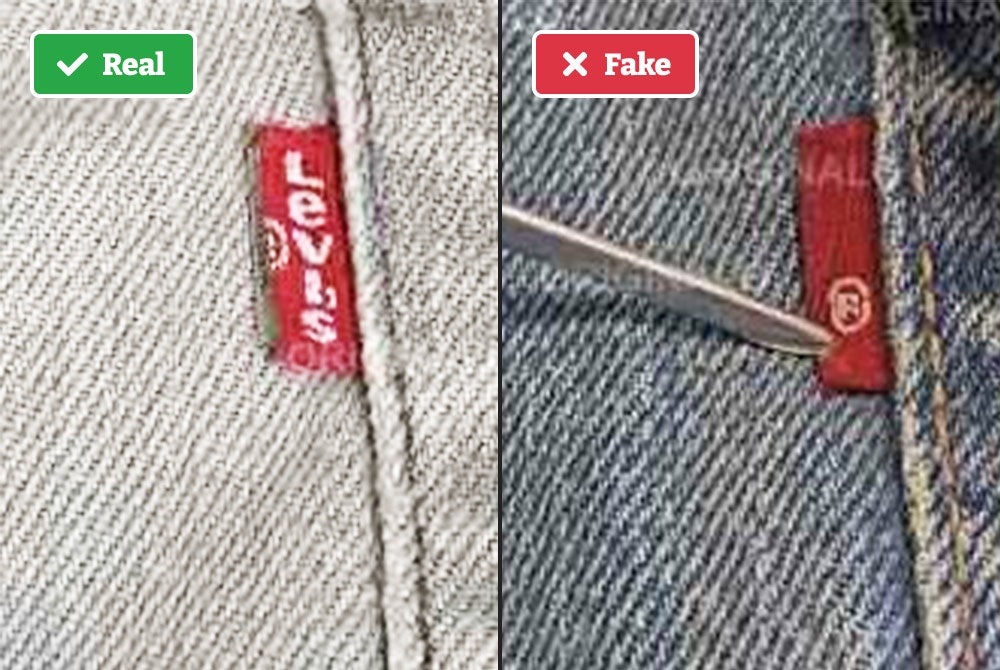
Which Brands Are Commonly Counterfeited?
The most common counterfeit goods include:
- Products from well-known brands (e.g., Nike, Apple, Louis Vuitton)
- Products that have a hefty markup.
- Popular products (e.g., Airpods, designer handbags)
- Small- or medium-sized products
- Products that can be easily manufactured in bulk and shipped
Common products that counterfeiters choose to fake include:
- Shoes
- Clothing
- Leather goods
- Electronics
- Watches
- Perfumes
- Cosmetics
- Jewelry
- Toys
Scammers will create fakes for anything in demand to make a quick buck. They will also jump on new trends quickly. For example, when a new Spiderman movie comes out, there'll be plenty of Spiderman costumes for sale claiming to be licensed by Marvel, but in actual fact, they're fakes.
Scammers also have favorite brands to counterfeit, usually because of their popularity and markup on the price. Think about it, a counterfeiter could sell a belt for $15, but if they disguise it as a designer belt, they could sell it for upwards of $100.
Be careful when you're buying any products from the following brands from non-authorized retailers:
Sergi Garcia, Chief Marketing Officer (Red Points)Counterfeiting is a threat to a brand's revenue, reputation, distribution network health, in-house team's time, and client trust. Building a brand is not an easy job—it takes time and effort.
When consumers unknowingly buy counterfeits online and realize it's not a genuine product, they blame it on brands.
Additionally, finding and taking down counterfeits manually is incredibly time-consuming.
Through technology, Red Points can detect and enforce counterfeits, fake websites, and unauthorized sellers automatically. Over 1,000 companies rely on Red Points to recover their legitimate revenue from counterfeiting, piracy, impersonations, credential reselling, and distribution abuse online.
How to Avoid Buying Fake Products
Counterfeits can be hard to spot, but you can protect yourself from this scam by taking the following precautions.
Research the Seller
A scammer will make it look like you are buying the product from an official reseller or directly from the official company. You should track down the company's name selling the product and check that they are licensed to sell the product. Better yet, buy only from nationally-known retailers or authorized vendors of the product.
Research the Product
Get familiar with the appearance of the product you are going to buy. Know what the logo should look like. Brands usually put their logos in a particular place on the product. Visit the brand's website and look at images of the product in detail. Counterfeiters usually will miss a detail or two. If the product doesn't look right, don't buy it.
Do a Reverse Image Search
You may not be able to spot a fake from the listing itself because scammers will use photos they find from the official retailers. Try doing a reverse image search to see if it's a photo of the actual product they're selling or if they just stole it from someone else.
Look for Red Flags
Scammers want to make a quick buck and will cut corners when listing their fakes for sales. Go through the list of red flags above, and if you detect anything off, don't purchase the product.
Use a Credit Card
While this won't prevent you from purchasing a counterfeit, it will give you the ability to get your money refunded if you buy one. If you do, contact the credit card company and dispute the charge.
What to Do After Purchasing Fake Products
If you have fallen for this scam and have accidentally purchased a counterfeit product, there are some things you can do to possibly get your money back and help authorities stop the scammer.
Don't Use It
Most of the time, fakes and counterfeits are manufactured with inferior quality or toxic materials. Using a fake product can cause skin irritation, fire, and other consequences, depending on the product. So it is best not to use it at all. But don't throw it away. The authorities may need it for evidence.
Keep Records
Take a photo of the item you received, take a screenshot of the page you purchased the item from, save the URL of the page, and save all emails you have regarding the item. This type of information will help authorities catch the scammer.
Request a Refund for the Fake Products
This will not work with all fake product scams, but if they are selling somewhere like eBay, where buyers can give feedback on sellers, you could have some leverage to convince the seller to give your money back.
Contact the Online Marketplace
If the scammer built a fake website to sell counterfeits, contacting them to complain about the fake may not work. But if they are using an online marketplace like Amazon or eBay, the marketplace will usually have a policy set up for reporting fake products, and you could get a refund.
Contact the Brand
This is an effective way to prevent other buyers from falling for the same fake product scam. Brands are usually really concerned about fakes. So they will use the information you give them to educate buyers on detecting counterfeit products, track them down across the internet, and remove them from stores.
Contact Your Credit Card Company
Call your credit card company if you used a credit card to purchase the fake item. You may get a full refund for your purchase by disputing the charge.
Contact the Authorities
You should also report the scam to the authorities, including the Federal Trade Commission (FTC) and the FBI. This won't help you get your money back, but it will help stop others from falling victim to the same scam.
Scams Relating to Fake & Counterfeit Products
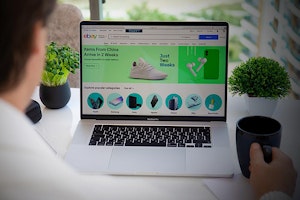
eBay Photo Scams: How to Avoid Buying Fake Products
Don't believe everything you see. Online listings have become a playground for scammers using fake photos to win your business.
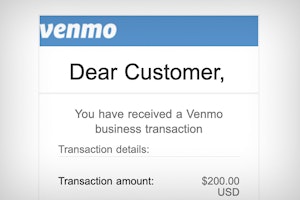
Selling on Facebook Marketplace? Beware of Fake Venmo Emails
Scammers are sending fake Venmo emails to Facebook Marketplace sellers in an attempt to steal login information and money.
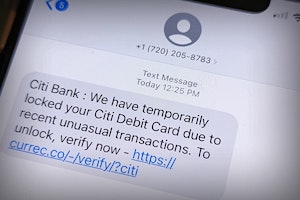
Citibank Text Message Scam: Locked Debit Card Alert Is Fake
If you've received a locked debit card text message from Citibank, it's likely a scam. Don't click on the link and delete the text message.
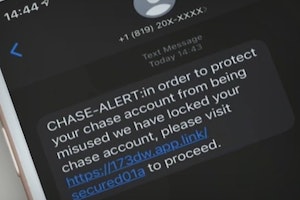
Real Chase Fraud Text Alert or Scam Message?
If you receive a text message from Chase Bank, don't click on any links or call the phone number listed—it could be a scam designed to steal your information and money.

Amex Fraud Text Alert Scams: Spotting a Fraud
If you receive a text message from American Express, don't click on any links or call the phone number listed—it could be a scam designed to steal your information and money.

Fake Verizon Text Messages: How to Avoid a Scam
Verizon may send you text messages from time to time with account updates or data usage alerts, but beware—most of these aren't really from Verizon but scammers.
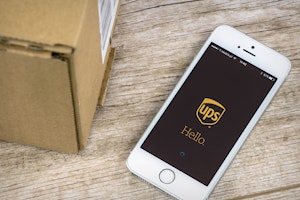
Get an Unexpected Delivery Alert? It May be a UPS Text Scam
Scammers are using SMS messages to send fake alerts to customers regarding a package delivery. Here's what to know about this scam.
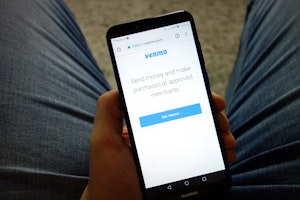
Venmo Text Scam: Don't Fall For These Fake Messages
If you received a text from Venmo with a link to verify a payment or deposit, or are asked to complete a survey in exchange for money, it may be a scam.

Truist Text Alert: How to Identify a Real Text from a Scam
You may think that that Truist have sent you a text alert about your account. Here's how to check if it is actually a scam.
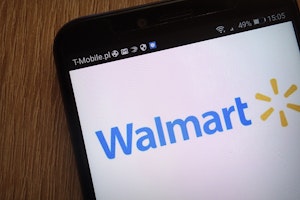
Wait! That Walmart Giveaway Text May be a Scam!
Fake texts are being sent to consumers claiming a hefty sum is waiting for them on a Walmart gift card, but falling for this scam puts you at risk of identity theft.
Guides Relating to Fake & Counterfeit Products
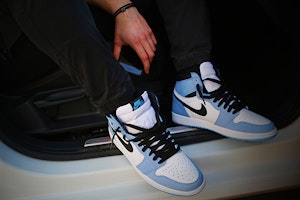
How to Tell if Nikes Are Fakes: From Tags to the Stitching
Nike is one of the biggest brands targeted by counterfeiters and scammers - be extra careful with Nike products from non-official retailers as you could end up with a fake

The Dangers of Fake THC Vapes Flooding The Market
If the health dangers surrounding vape cartridges weren't bad enough, fake THC vapes containing harmful contaminants are being sold.
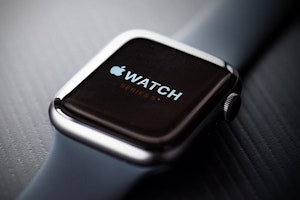
Real or Fake Apple Watch? 8 Ways to Tell the Difference
Although a lot of work has been done to remove counterfeit Apple products from shelves and online stores, fake Apple watches are still easy to come by.
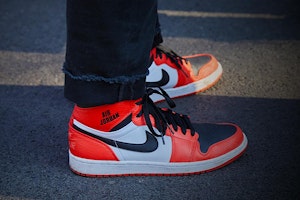
Real vs. Fake Jordans: 7 Easy Ways to Spot Fake Nikes
If you're in the market for a new pair of Nike Air Jordans, cheaper isn't necessarily better. With so many counterfeiters at large, you might end up buying fakes.
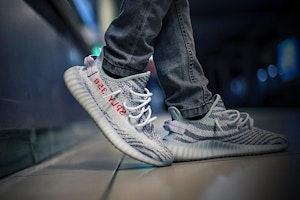
Spot Fake Yeezys in 8 Easy Ways & Get Your Money's Worth
If you're on the hunt for a new pair of Yeezys keep your eyes peeled for fake versions being sold online.
News Relating to Fake & Counterfeit Products
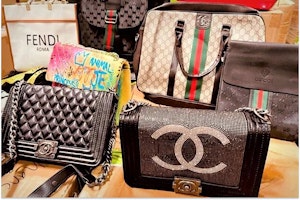
$30M Worth in Counterfeit Goods Seized in Los Angeles
Fake Gucci, Chanel, and Louis Vuitton handbags and clothing were just some of the items found in a large shipment of counterfeit goods coming in from China.
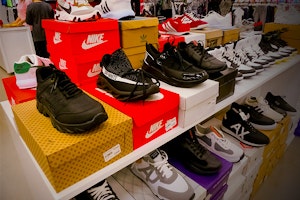
Nike Teams Up with U.S. Customs to Stop Counterfeiters
Nike is taking a stand against counterfeiters and stopping fake products before they hit U.S. soil.

Apple Fights Back Against Counterfeiters on Social Media
Apple creates a team for the sole purpose of removing fake products from social media sites.
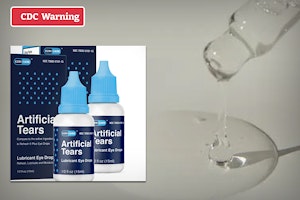
Urgent CDC Warning: Eye Drops Linked to 3 Deaths, Loss of Vision
The CDC is warning eye drops users of a rare bacterial infection from 2 brands of eye drops. The infection is resistant to antibiotics and has resulted in the loss of vision, loss of eyeballs and the death of 3 patients.
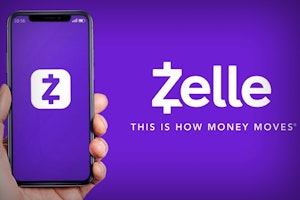
Banks May Refund More Zelle Scam Victims in 2023
Zelle scams have reached a serious volume. New reports suggest that banks are looking at new refund protections for customers in 2023.
